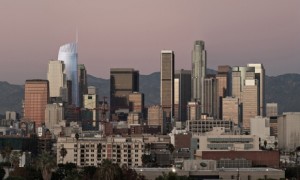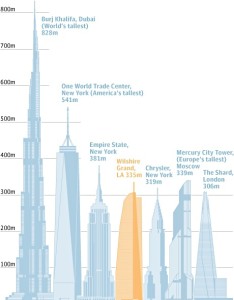Oh how times have changed. Best Buy, the consumer electronics company once renowned as one of the best companies in the early 2000’s, has gone from record growth to huge declines and stagnation. When one of its biggest competitors fell off in 2011, Circuit City, experts following the company have accused the company of lazy tactics, as well as a lack of innovation in order to stay ahead of the times. However, despite all of the talk of doom and gloom for the company, there is still belief that Best Buy can still turn things around as its share price hit $44 last November, a new high for the company. Sure, your neighborhood Best Buy may have closed in the past few years but that does not mean the company won’t see a brighter future.
But first, in order to properly understand how Best Buy can thrive in the future, we must examine how it got to where it is today. It all started in 1966 when founder Richard Schulze and his business partner opened an audio specialty store, with no emphasis on consumer electronics, yet. The first stores were all in Minnesota, where Shulze was from, and in 1970 Sound of Music, the name of the company, had made its first $1 million and had opened 9 other stores within the state (Wall Street Journal, 2013). Fast forward to 1983, and the board of directors of the company had decided to rename and rebrand the company as Best Buy, with the purpose of putting more of an emphasis on consumer electronics. This year was the turning point for the company as it also opened its first “megastore” that we have begun to know over the years. After this, the changes begin to steamroll quickly because is 1985, the company raised $8 million on its initial public offering on the Nasdaq (Wall Street Journal, 2013). Along with its debut on the New York Stock Exchange in 1987, the company sought to transform its stores by having stores that were not cheap and dimly lit. Along with this change in the nature of their stores, the company did away with the practice of paying their salespeople on commission, in an attempt to rid the work environment of questionable sales tactics like we see at car dealerships across the country. Just five years after the company hit the New York Stock Exchange, it made its a first $1 billion in annual revenues (WSJ, 2013.) Fast forward to 1999, and we see the successful partnership with Microsoft that saw the two companies cross-promoting products, and just a year later Best Buy was added to the S&P 500 index.
As 2000 came, the company began to see many changes that began with the succession of Richard Shulze, the company’s founder and long time CEO. He was taken over by Brad Anderson who had been apart of the company for many years. Along with this theme of change and reaching new heights, Best Buy opened its first international store in Canada, along with their acquisition of Geek Squad in 2002 (TWICE, Alan wolf, 2002). Another international acquisition took place occurred in 2006 when they bought the Chinese based appliance retailer Jiansu Five Star Appliance, and the company opened its first stores in China the year after (Businessweek, 2007). Before most of these acquisitions of international companies and their subsequent emergence in the international market, in 2004 Best Buy was named “Company of the Year” by Forbes, a recognition that this was once one of the most well run companies in the United States (Forbes, 2004). In 2009 Best Buy became the first third-party company to sell Apple’s iPhone as well as its purchase of Napster in 2008, as the company was thinking of entering the music selling market, as it had already begun to sell musical instruments (Reuters 2009). But in 2010 is where things stet to get tricky for the consumer electronics giant.
In 2010 Best Buy had opened 11 store in the United Kingdom to further their goal of having an international presence. But in a bizarre move in the following year, Best Buy closed those “U.K. big-box stores and paying $1.3 billion to buy out its partner in U.S. mobile-phone retailing as the electronics giant retools its struggling business to focus on smaller shops” (Bustillo, Wall Street Journal, 2011). At this point in time, the company could be described as having a “recession”, if it were a government, instead it is a mightily struggling company trying to figure out how to turn around “five consecutive quarters of sales declines at stores open at least 14 months, already closed big-box locations in China and Turkey earlier this year as it reins in capital investment” (Bustillo, Wall Street Journal, 2011). But this was just the beginning of the avalanche of bad news that the company had yet to announce. The next year, 2012, Best Buy announced a “$1.7 billion quarterly loss and outlines a plan to move away from the big-box strategy. The company says it will close 50 large stores in 2012 and test remodeled store formats in San Antonio and Minneapolis, while adding hundreds of small stores focused on selling cellphones. It also discloses plans to lay off 400 workers as part of a plan to trim $800 million in costs” (Wall Street Journal, 2013). For whatever it’s worth, as a resident of San Antonio during the years of their “remolded store formats”, I have yet to step foot in the store, and I’m not sure if any of my generation have been frequent visitors either. But we’ll get to this later on.
In his 3 year reign as CEO of the company, Brian Dunn had experienced both some of the best and worst times of the company’s history, but to add to his misery the now ashamed Dunn quite possibly took the company to a new low. When Dunn first joined the company as a salesperson, he slowly moved his way up the corporate ladder for 28 years until 2012 when he resigned due to the criticism that he was “not moving quickly enough in the face of online competition” and as a result, “Director Mike Mikan is named interim CEO until a replacement is found” (Wall Street Journal, 2013). However, the controversy did not stop there. In internal investigation was released later that year where “an internal probe finds that he [Schulze] didn’t alert other directors that his handpicked successor as chief executive, Mr. Dunn, was allegedly having an inappropriate relationship with a female employee” (Wall Street Journal, 2013). Over the next year Shulze, who was still the company’s biggest shareholder, looked to buy out the remaining shares in the company in an attempt to take the company private, but newly appointed CEO Hubert Joly nixed the deal and the company remains in a struggle to find itself in an ever evolving marketplace for big-box retailers.
But how did it all go wrong for the “ultimate showroom” electronics retailer after many years of sustained success? First of all, many of its products that it sells are easily bought online with the click of a button, which further curtails the company’s pride in their showroom experience and excellent customer service track record. Some experts who have followed the company over the years that, despite its success against its former competitors like Circuit City who have gone by the wayside, the company has struggled to innovate and too sure of its own position in the marketplace. With the emergence and growth of Amazon, who sells essentially the same products as Best Buy and then some, Best Buy hasn’t coped with this evolving and changing scenario. As Al Lewis of the Wall Street Journal aptly states, “the electronics retailer’s critics have been calling this a deadly idea for years: Customers go to its giant stores to play with its toys, then they buy them somewhere else, sometimes using a smartphone before they even leave the floor” (Lewis, WSJ, 2014). Recently, after a dismal holiday period for the company resulted a whopping 28% slump in the stock price after they reported total revenue had slid 2.6% (Lewis, WSJ, 2014). This should not come as a surprise as a company the way Best Buy is structured would see its employees working more hours during the holiday period, but still not seeing more sales. In essence, a higher operating cost with no benefit in terms of more sales of products.
But just exactly how Best Buy crawls out of the dark hole of irrelevancy that it is currently is a more difficult question to answer. One idea that has been tossed around is the idea of irrelevancy in terms of the number of stores. For example, Best Buy currently “maintains a total of 1,512 in the U.S. and another 489 around the world” (Rosenblum, 2013), which is an astonishing number when you think about the cost of overhead in maintaining these stores along with the employees. But its not just a fewer amount of stores that could help alleviate the company, they also need to invest in their website so that it can compete with the likes of Amazon in regards to its ease of interface navigation. After going to the Amazon website all it takes is a few clicks, sign into your account, and your package will arrive in the next three to five business days. But the investments should not stop there. Along with fewer stores and a better website, Best Buy has to capitalize on its physical advantage that it has on its competitors rather than simply try to be like them, because you are not Amazon. Meaning the company has to multiply its efforts in offering the customer the best experience possible, and that does not just entail great customer service. It means hatching out a store layout, something they have toyed with over the years, to where people know where they can easily find the product they are looking for compounded with a knowledgable employee who can tell them about the shiny new gadget that you absolutely have to have.
Sure, there is a lot of work to be done for Best Buy but that does not mean big-box retailers like them cannot survive in today’s world. The good news is, there is a lot of room for improvement and that it should maintain the stance that the company has already seen the worst of it and better times are to come. All of the listed improvements for the stores certainly are not too much to ask for, and despite the tribulations with the scandal, and cover up with former CEO’s, Best Buy can play an important role in the future as it tries to find a balance between the likes of Wal-Mart and Amazon.
Sources: http://online.wsj.com/news/articles/SB10001424052702303465004579324992775153208, http://www.forbes.com/sites/paularosenblum/2013/08/12/can-best-buy-survive-and-are-its-problems-really-all-about-amazon/, http://www.forbes.com/sites/lauraheller/2011/09/19/where-best-buy-went-bad/, http://online.wsj.com/news/articles/SB10001424052702304299304577350223835262792, http://www.twice.com/news/news/best-buy-wraps-future-shop-deal/22591, http://online.wsj.com/news/articles/SB10001424052970204554204577023320303430402, http://journalistsresource.org/studies/government/municipal/impact-big-box-retailers-employment-wages-crime-health?utm_source=JR-email&utm_medium=email&utm_campaign=JR-email#


